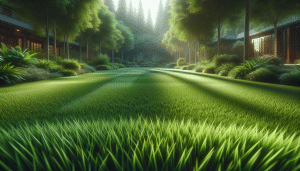You Can Create a Thriving Low Maintenance Garden
Henry King October 19, 2025
Explore proven strategies to design a low maintenance garden that thrives with minimal effort. Uncover how plant selection, smart watering, mulching, and sustainable landscaping come together for beautiful, functional outdoor spaces. If reducing yard work while boosting garden beauty intrigues you, this guide lays out essential steps.
Understanding Low Maintenance Garden Principles
Designing a low maintenance garden starts with clear planning and realistic goals. Many people aim to enjoy vibrant flowers, healthy shrubs, and green lawns without constant tasks like weeding, watering, and fertilizing. Low maintenance gardening is about selecting elements that thrive naturally in your region without extra attention. It doesn’t mean “no work at all”—but it does promise less overall effort through smart upfront choices and ongoing strategies. By assessing factors such as local climate, native plants, and soil quality, anyone can shape an outdoor space tailored for easy care and lasting appeal.
The right foundation makes all the difference. A low maintenance garden often blends native plants with drought-tolerant varieties. These selections reduce the need for chemical fertilizers and limit pest problems, because they’re naturally suited to their environment. Careful site layout, like grouping thirsty plants together and using raised beds or defined borders, also cuts down watering zones and allows for more organized, less demanding upkeep. Paths and hardscaping break up large areas of vegetation and create clear walkways, decreasing mowing or trimming time. Such choices set the tone for a landscape that respects both your time and the environment.
Reducing maintenance goes hand-in-hand with boosting sustainability. Strategies like using organic mulches, conserving water, and favoring perennial plant choices minimize recurring chores. Composting returns nutrients to the soil, while automated irrigation systems take worry out of watering. Even lawn alternatives such as groundcovers, gravel paths, or wildflower meadows shrink the square footage needing regular attention. Adopting these principles from the start lets you relax in a space that’s as practical as it is beautiful. Learn how these concepts connect with specific landscaping techniques throughout the rest of this article.
Choosing Plants for Effortless Success
One of the secrets to low maintenance gardening lies in smart plant selection. Opting for native plants gives an instant advantage. Native perennials, shrubs, and grasses flourish because they’re adapted to the local seasons and rainfall, often resisting pests and diseases that challenge their exotic counterparts. For gardens in regions with hot summers, drought-tolerant succulents and ornamental grasses provide an appealing, resilient backbone with little need for supplemental watering. Including a variety of textures and colors brings visual interest without requiring high upkeep.
Beyond just native options, consider low maintenance groundcovers for weed control beneath trees and in difficult spots. Creeping thyme, ajuga, and sedums form dense mats that suppress weed growth and tolerate occasional foot traffic. Pair these with long-blooming perennials such as coreopsis, coneflower, or black-eyed Susans to maintain color across the season. Shrubs like spirea or boxwood offer evergreen structure while requiring only minimal pruning. When combining these choices, group them by water needs to streamline care.
When selecting plants, explore local cooperative extension or botanical garden lists which highlight resilient, proven performers for your region. These sources, such as those published by state universities or horticultural societies, often detail which species are invasive and provide alternatives. This ensures that your garden maintains environmental balance and avoids surprises in ongoing care. The result? Less watering, infrequent fertilizing, and virtually no pesticides—just what any gardener seeking an easy life outdoors is after.
Mulching and Soil Improvement Techniques
Mulch acts as a silent guardian in the low maintenance landscape. A thick layer of organic material—wood chip, shredded bark, or compost—not only retains soil moisture but blocks weeds and moderates temperature swings. This one step dramatically reduces how often you’ll need to water or weed, keeping soil healthy and roots cool in summer, warm in winter. Reapply mulch yearly or biannually for best results.
Composting integrates seamlessly with low maintenance gardening. Setting up a compost pile or bin allows you to recycle kitchen scraps and lawn trimmings into nutrient-rich amendments. Spread finished compost around trees, shrubs, and perennials to steadily improve soil structure and fertility. Looser soil with better drainage supports healthy roots and boosts plant resilience, making watering less frequent and fertilizing almost unnecessary. As compost builds, earthworms and beneficial microbes establish themselves, strengthening natural defenses against diseases.
Soil improvement isn’t just about what you add—sometimes it’s about what you stop doing. Avoid frequent tilling, which can disrupt soil structure and bring dormant weed seeds to the surface. Instead, practice no-dig or minimal disturbance methods and top dress beds with compost or mulch as needed. Over time, improved soil fosters more vigorous growth, allowing your garden to remain vibrant with notably less work. Every year, these techniques pay off by further lowering overall maintenance requirements.
Efficient Watering and Sustainable Irrigation
Watering is a major time (and resource) sink for many gardeners, but efficient systems can ease this load substantially. Drip irrigation delivers water directly to plant roots, minimizing waste and evaporation. Timers and moisture sensors can automate watering based on actual need, not guesswork or calendar reminders. For manual watering, soaker hoses placed under mulch provide deep, even moisture distribution—targeting roots, not foliage.
Group plants with similar water requirements in the same areas of your yard. This concept, called hydrozoning, prevents over- or under-watering and supports long-term plant health. Rain barrels and cisterns can capture roof runoff, offering a sustainable source for garden irrigation during dry spells. Mulching further enhances water retention, allowing you to go longer between irrigation sessions. Together, these approaches save both water and effort while supporting robust plant growth.
Planning irrigation and drainage well also protects against erosion and waterlogging. If your property has slopes or low spots, consider installing French drains, swales, or rain gardens to manage excess moisture. These features blend with the landscape while reducing maintenance complications caused by standing water. The goal is always clear—water wisely, conserve resources, and free up time so the garden remains a place of enjoyment rather than daily obligation.
Embracing Lawn Alternatives and Easy Groundcovers
Lawn care traditionally adds hours of mowing, edging, fertilizing, and reseeding. For a genuinely low maintenance garden, explore creative lawn alternatives. Replacing part or all of a turf lawn with ornamental grasses, wildflower meadows, or gravel patios can drastically cut regular care requirements. Incorporating pathways made of flagstone, brick, or mulch not only defines space but reduces mowing areas and creates a pleasing flow through the landscape.
Groundcovers play a crucial role in easy-care yards. Plants like creeping Jenny, mondo grass, or bugleweed fill gaps and provide attractive foliage while naturally outcompeting weeds. These ground-hugging plants are well-suited for slopes and shady corners where grass struggles, offering color with minimal input. Varieties with dense root systems help stabilize soil, eliminate bare spots, and require infrequent trimming, making them practical for many garden designs.
Blending groundcovers with stepping stones, mulched open spaces, or low-growing perennials leads to lush, patchwork-style lawns that look great and are much easier to maintain than a conventional grass carpet. Creativity in this area pays off—less mowing, lower water use, and a habitat that encourages pollinators and other wildlife. Every square foot converted to easy-care alternatives saves time and allows you to focus on enjoying your outdoor sanctuary.
Seasonal Care and Smart Garden Maintenance Routines
Even a low maintenance garden benefits from occasional seasonal attention. Simple routines—like pruning back perennials in late fall or early spring, checking irrigation systems, and top dressing with mulch or compost—help reset your space for the year ahead. Tasks like fertilizing, pest control, and weeding are minimized by earlier choices, but routine observation keeps everything in balance and spot problems early.
Smart maintenance also means knowing when and how to intervene. Many shrubs and perennials need only annual or biennial trimming to stay neat. Pest outbreaks can often be managed through hand picking or by encouraging beneficial insects, rather than repeating chemical sprays. Observing plant vigor, leaf color, and soil moisture lets you direct your efforts precisely where needed.
Evaluate routines yearly and adjust as the garden matures—older plantings often become easier to care for as they fill in and shade out weeds. If a particular area repeatedly demands extra work, consider redesigning with hardier plants or mulched beds. Over time, these efforts ensure your relaxation and enjoyment remain front and center in your home landscape, alongside thriving plants and a renewed sense of connection to nature.
References
1. American Horticultural Society. (n.d.). Low-Maintenance Landscaping Tips. Retrieved from https://www.ahsgardening.org/ardisplay.aspx?ID=3441
2. United States Department of Agriculture. (2022). Create Low-Maintenance Landscapes. Retrieved from https://www.nrcs.usda.gov/resources/guides-and-instructions/creating-a-low-maintenance-landscape
3. Penn State Extension. (2022). Low Maintenance Landscaping. Retrieved from https://extension.psu.edu/low-maintenance-landscaping
4. Missouri Botanical Garden. (n.d.). Gardening Help: Easy Lawns and Lawn Alternatives. Retrieved from https://www.missouribotanicalgarden.org/gardens-gardening/gardening-in-st-louis/visual-guides/easy-lawns-and-lawn-alternatives
5. University of California Agriculture and Natural Resources. (2021). Drought-Resistant Landscaping. Retrieved from https://ucanr.edu/sites/California_Drought_Solutions/Drought-resistant_Landscaping/
6. University of Minnesota Extension. (2022). Mulching and Watering in the Home Garden. Retrieved from https://extension.umn.edu/planting-and-growing-guides/mulching-and-watering-vegetable-garden







